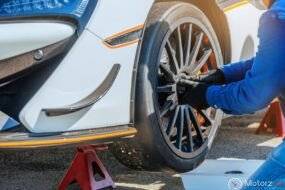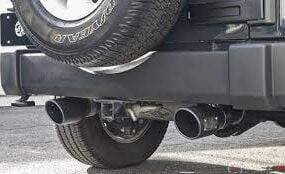The dreaded Check Engine Light On? Common Causes and What to Do light can be a source of anxiety for many car owners. When that ominous orange or yellow light illuminates on your dashboard, it’s easy to feel a sense of panic. However, it’s essential to remember that the check engine light is not necessarily a sign of imminent disaster. In this comprehensive guide, we will explore common causes of the check engine light coming on and provide practical steps on what to do when it happens.
Understanding the Check Engine Light
Check Engine Light On Before delving into the common causes, it’s crucial to understand what the check engine light represents. The check engine light, often depicted as an engine-shaped icon, is part of your vehicle’s onboard diagnostics system (OBD). Its primary purpose is to alert you to potential issues within your vehicle’s engine, transmission, or emissions system. When the check engine light comes on, it means that the OBD system has detected a problem or anomaly that requires attention. It could be a minor issue, such as a loose gas cap, or a more significant problem, such as a failing sensor or a malfunctioning component.
Common Causes of the Check Engine Light
Loose or Faulty Gas Cap: Check Engine Light On One of the most common causes of the check engine light is a loose or faulty gas cap. A loose gas cap can allow fuel vapors to escape, triggering the light. Simply tightening the cap may resolve the issue. A failing catalytic converter can trigger the check engine light. This component is crucial for reducing harmful emissions, and its failure can result in increased pollution and decreased engine performance.
Spark Plug and Ignition Coil Problems
Worn-out spark plugs or faulty ignition coils can lead to misfires in the engine, causing the check engine light to come on. When it malfunctions, it can disrupt the air-to-fuel ratio, affecting engine performance. Exhaust Gas Recirculation (EGR) Valve Issues: Problems with the EGR valve can lead to excessive emissions and decreased fuel efficiency.
Transmission Issues
The Check Engine Light On can also be triggered by transmission problems, such as slipping gears or a malfunctioning transmission control module. Evaporative Emission Control System (EVAP) Leaks: The EVAP system prevents fuel vapors from escaping into the atmosphere. A leak in this system can trigger the check engine light. Various factors, including fuel delivery problems and ignition system issues, can cause engine misfires, which will trigger the check engine light.
Battery or Charging System Problems
Voltage irregularities can lead to the illumination of the check engine light. Don’t Panic While the check engine light can be concerning, it doesn’t always indicate a catastrophic problem. In many cases, it’s a warning that something needs attention. Check for Other Warning Lights If other warning lights, such as the oil pressure or temperature light, also come on, pull over and turn off the engine immediately. In such cases, it’s safer to seek immediate professional assistance.
Check the Gas Cap
As a first step, check the gas cap to ensure it’s tight. If it was loose, the light may turn off after a few driving cycles. An OBD-II scanner is a valuable tool that allows you to read the error code stored in your vehicle’s computer. Many auto parts stores offer free code reading services. The code will provide insight into the specific issue. While an OBD-II scanner can provide a code, it won’t necessarily pinpoint the exact problem. It’s advisable to consult a qualified mechanic who can diagnose and repair the issue correctly.
Follow Maintenance Schedule
Regular maintenance, such as oil changes, air filter replacements, and spark plug changes, can prevent many check engine light triggers. Following your vehicle’s recommended maintenance schedule is essential. Address the Issue Promptly Ignoring the check engine light can lead to more significant problems and potentially higher repair costs. Address the issue promptly to prevent further damage.
Conclusion
The Check Engine Light On can be a cause of concern, but it’s also a valuable tool for maintaining your vehicle’s health. By understanding the common causes and taking appropriate action when the light comes on, you can ensure that your car continues to run smoothly and efficiently. Remember that addressing minor issues promptly can prevent them from escalating into major and costly repairs. Ultimately, regular maintenance and prompt attention to the check engine light will help keep your vehicle in top condition.
Battery Maintenance
check engine light on and off
check engine light on audi a4
check engine light on bmw x3
check engine light on toyota yaris
Common Causes Engine Light On
What to DoCheck Engine Light On











